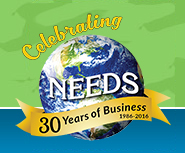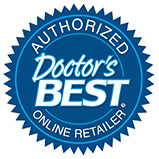|
|||||||||||||||||||||||||||||||||||||||||
|
Back to the Victory Garden: How Did We Get into this Chemical Mess, Anyway?
by John E Vlahakis Not that long ago—only about 100 years—most construction materials, textiles, inks, paints, even chemicals were made from plant matter. Soaps (not detergents) were the only cleaning choice for homes and personal use. World War I demanded much from each homeland. Foods, metals, oils, and coal were just a few of the materials sent to the front. At home, people made sacrifices with patriotic fervor. Posters from that era are redolent with terms that tug at our collective memory: Victory Gardens, sugar rationing, Liberty Loans. In 1916, the first synthetic detergent was born. It was a new kind of "soap," built from raw materials, then put together chemically. The end of WWI signaled the end of such research on detergents, until the military in WWII desperately needed something that would clean well using cold, mineral-rich seawater. These detergents, because they worked well in cold water, landed in American homes as the perfect laundering agent for fine fabrics and hand dishwashing the "good" china and other kitchen favorites that could deteriorate in hot water. It was 1946 when all-purpose laundry detergents made their appearance. Chemists named it a "built" detergent, because, in place of the fat and alkaline combination used to make soap, built detergents used (and still do) a surfactant and builder formula. Think petrochemical plus phosphates. This was the mixture that burst into the public domain and was embraced by families everywhere. Detergents could now quite effectively clean heavily soiled clothing. And by 1953, detergent sales surpassed soap sales and the market for petrochemicals, from plastics to detergents to synthetic fabrics, surged concurrently. Products made from plant matter diminished. Expensive to grow, harvest, store, and distill, manufacturers turned to petrochemicals in the same way one chooses a can of soup over chopping vegetables and tending a simmering stockpot for four or so hours. Oil was already in the ground, needing neither time to grow, nor energy to harvest. It only needed to be distilled and transformed in bulk. An emerging disorder, Multiple Chemical Sensitivity (MCS), seems to be grounded in overexposure to petrochemicals. Largely unresearched and hotly debated, MCS is unrecognized by the American Medical Association, The American Academy of Allergy and Immunology, and the American College of Physicians as a legitimate disorder. Sufferers report a variety of debilitating symptoms, but no organ damage reports have come to light (organ damage is the red flag signal of overexposure to toxic levels of chemicals). However, the U.S. Department of Human Health and Services has issued, through a subcommittee, a reminder that indicators of MCS may well emerge in time. High-dose lead poisoning in young children from ingesting paint chips was at first dramatically obvious. However, it took years for the effects of low-dose lead poisoning in children to be understood and widely known. Similarly, we know quite well that high exposure to toxic chemicals can be deadly, yet only time and research will bring a better understanding of the effects of lower exposure to toxic chemicals … and more relief to those with MCS. In the meantime, returning to petrochemical-free, plant-based soaps and detergents may not be the same as creating a Victory Garden, but it will contribute to the relief of pollution (a national concern), the well-being of your family (after all, this is your own backyard), and, just possibly, your own future health. According to the U.S. Department of Agriculture, in conjunction with the University of Missouri, here is a list of cleaning chemicals to avoid:
With household, industrial/bulk professional, and natural pet care lines, Earth Friendly Products clean without toxins,petrochemicals, bleach, ammonia, phosphates, or other harmful ingredients. Plus, no animal ingredients or animal testing are used in the making of these products. Pure, simple, and pronounceable, ingredients include corn, coconut, citrus, and other essential plant oils, and herbs. Products biodegrade quickly and completely, so there is no further environmental impact or added cost for toxic cleanup. The plant-based formulas are condensed and ultracondensed so that, ounce-for-ounce, they provide powerful cleaning results with all the simplicity and purity present prior to World War I. |
|
|||||||||||||||||||||||||||||||||||||||
















